The Pacific Food System Outlook represents the first regionwide coordinated effort to provide the outlook for the Pacific food system. The food system includes not just production agriculture, but also the whole complex of economic relationships and linkages that tie the region's food consumers to producers. The goal of the Pacific Food System Outlook is to help increase knowledge about the diverse components of this vital segment of the global economy.
- Chairman, Pacific Food System Outlook, PECC:
Dr. Walter J. Armbruster
President of the Farm Foundation - Senior Coordinator, Pacific Food System Outlook:
Mr. William T. Coyle
Senior Economist, Market and Trade Economics Division
Economic Research Service, US Department of Agriculture
Past Publications

'Market Volatility and the Food System' (2009-2010)
The food system is one of the economic sectors most sensitive to the potential consequences of price volatility. The expectation is that price volatility will continue for at least the near term.
Public and private sector decision makers around the region need the best possible information to address this challenge.
This year’s report analyzes the underlying factors driving volatility; the potential nearterm implications for production agriculture, food security, and the broader food system; and the nature of measures and approaches that governments and the private sector might employ to reduce potential adverse economic impacts.
default PFSO (2009-2010): Market Volatility and the Food System (1.15 MB)
 'Climate Change and the Food System' (2008-2009)
'Climate Change and the Food System' (2008-2009)
The fourth assessment report of the International Panel on Climate Change (IPCC , 2007), the recent series of droughts in Australia, the increased frequency of extreme weather events in other parts of the region, and rising food prices in 2006-08 all underscore broad concerns about the earth’s changing climate and the ramifications of these changes for the PECC region’s economy.
Of all economic sectors, climate change has its most significant impacts on agriculture because of its broad geographic dispersion and obvious close dependence on climate and environmental factors. Rising average temperatures, changes in precipitation patterns, and other weather changes, are having and will continue to have a variety of impacts, some positive and others negative, on agricultural productivity in the PECC region. These impacts will vary by geographic location, the mix of agricultural activities, and the extent of private and public sector adjustments.
default PFSO (2008-2009): Climate Change and the Food System (1012 KB)
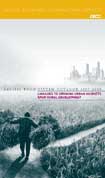
'Linkages to Growing Urban Markets Spur Rural Development' (2007-2008)
Rapid income growth and urbanization is having profound impacts on the food system in the developing member economies of the region, creating opportunities to enhance farm-sector profitability and encourage vibrant rural areas. To achieve that potential, private and public decision makers must work to streamline and modernize the food system, embracing new approaches to link rural areas with expanding urban markets, according to PECC’s 2007-2008 Pacific Food System Outlook (PFSO) report.
To economically uplift poor rural areas, agricultural producers will need to adapt to changing market dynamics. This includes producing food products compatible with changes in the nation’s dietary habits, encompassing increases in demand for animal protein, fruits and vegetables, and processed products. Today’s consumers also demand higher quality and safety standards.
Private and public decision makers have significant roles in the process of integration:
- More attention must be focused on lagging inland infrastructure in developing economies. Expansion and upgrade is needed of roads, railways and waterways—a crucial linkage of rural and urban markets that provides producers with timely access to markets.
- Incentives are needed for modern supermarket chains to better connect with rural areas and domestic producers.
- Policy makers can help small- and medium-sized participants in the food supply chain to better respond to changes in the food system.
- Policy makers may need to help traditional markets identify and maximize their niche in the evolving food system
default PFSO (2007-2008): Linkages to Growing Urban Markets Spur Rural Development (1.47 MB)
 'The Future Role of Biofuels' (2006-2007)
'The Future Role of Biofuels' (2006-2007)
In 2006, oil prices surpassed US$75 per barrel for the first time in history, and in real terms came very close to equaling the record prices of 1980. Other energy prices followed suit.
For the Pacific food system, high energy prices have direct costs in outlays for fuel and electricity and indirect impacts, such as the cost of fertilizer needed to produce crops. These increase farm production costs and, more significantly, increase the costs of transporting, processing and marketing food products to the region’s 2.7 billion consumers.
Unlike previous high-price periods, the current increase in oil prices is having a fundamentally different impact on the food system, creating a more sustained interest in agriculture as a supplier of energy, not just a consumer.
Prospects for Pacific Rim agriculture to be a supplier of energy are the focus of this report, which is based on two days of discussion at the 10th annual Pacific Food System Outlook meeting held in Singapore in May 2006.
default PFSO (2006-2007): The Future Role of Biofuels (4.33 MB)
 'A Revolution in Food Retailing' (2005-2006)
'A Revolution in Food Retailing' (2005-2006)
The revolutionary change occurring in the retail food sector of the PECC’s less-developed economies has significant ramifications for the region’s entire food system. Assessing these impacts is the focus of the report generated from the May 2005 Pacific Food System Outlook (PFSO) annual meeting in Kunming, China.
In the region’s less developed economies, modern supermarkets now represent 10 to 50 percent of total food sales, rapidly approaching the 70 to 90 percent levels of developed markets.
The growth of modern supermarkets is driven by rapid urbanization, economic specialization, income growth and liberalization of foreign investment. Modern supermarkets are generating centralized procurement and distribution systems, and contributing to the emergence of specialized suppliers.
The more efficient and modern food system developing as a result of these changes is broadening the geographic range of firms, lowering consumer costs, raising food safety standards, and transforming the face of traditional agriculture and traditional food marketing channels.
default PFSO (2005-2006): A Revolution in Food Retailing (623 KB)
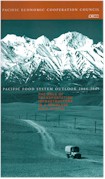 'The Role of Transportation Infrastructure in a Seamless Food System' (2004-2005)
'The Role of Transportation Infrastructure in a Seamless Food System' (2004-2005)
Food production is the most geographically dispersed industry in the region, while food demand is becoming increasingly concentrated in urban areas.
The region’s urban areas will grow by 590 million people in the next 20 years, twice the growth rate of the total population. Three-quarters of the growth will be in the less developed economies of the region.
Many agricultural areas in the developing parts of the region are isolated and “taxed” by inadequate transportation access to markets, resulting in large post-harvest losses, depressed farm prices and high consumer prices.
To control urban food costs, policymakers must invest either in streamlining domestic supply chains or in facilitating food imports through market opening measures, or some combination of the two strategies.
The food system requires not just adequate transportation infrastructure, but appropriate economic incentives, competitive transportation and logistic services, and policy reforms - within the borders of individual economies, as well as across the region.
Development of transportation infrastructure contributes to more efficient resource allocation and greater prosperity within an economy. This can benefit consumers with lower prices for a greater variety of foods, and realign agri-food trade patterns in the region.
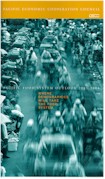
'Where Demographics Will Take the Food System' (2003-2004)
Demographic changes in the Asia-Pacific region over the next 20 years will generate powerful economic forces that will demand the close attention of food system policymakers. The magnitude of the demographic impacts on the food system is dramatic. The region’s urban populations are expected to grow by 590 million in the next 20 years. China’s urban population is expected to grow by 300 million people, an increase of 67%; almost half of those people will move in from rural areas.
The region’s total population is expected to increase by 400 million people, though that growth will vary significantly across the region. Rapid population and economic growth in developing and middle-income economies will increase their influence in the Pacific food system, further altering production, consumption and trade patterns.
Across the region, public and private investment in domestic food system infrastructure, as well as more liberal food trade policies, will be needed to ensure the cost and operational efficiency of the food system. More affluent and health-conscious consumers will demand greater quality, variety and convenience from the food system. In response, decision makers must anticipate the needs for trained personnel to implement and monitor quality control systems.
default PFSO (2003-2004): Where Demographics will Take the Food System (1.56 MB)
 'Making the Region's Food Supplies Safer' (2002-2003)
'Making the Region's Food Supplies Safer' (2002-2003)
Recent highly publicized international food safety incidents can have short- and longer-term impacts on consumer perceptions and food purchasing patterns. Over the medium to longer term, demographic shifts are having a profound affect on food consumption.
Demographers project that PECC’s urban population will nearly double to 2 billion by 2025. This is a rate twice as fast as the overall population growth. Crowding in cities can raise the potential for the spread of foodborne disease as well, particularly if clean water supplies, sanitation, and other infrastructure are inadequate.
Today, city dwellers find it convenient to eat more food prepared outside the home. Sixty percent of foodborne illness, according to one estimate, arises from the food service sector: restaurants, schools, other institutions, and large catered gatherings.
These shifts in both the PECC’s diet and locus of meal preparation require production, processing, and delivery of food through a complex food supply system and sometimes long supply chains that increase the time and opportunity for spoilage and growth of pathogenic bacteria as well as contamination of foods by viruses, parasites, fungi, and their toxins.
default PFSO (2002-2003): Making the Region's Food Supplies Safer (1017 KB)
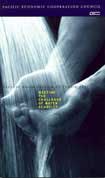 'Meeting the Challenge of Water Scarcity' (2001-2002)
'Meeting the Challenge of Water Scarcity' (2001-2002)
Less than one percent of the earth’s water is both fresh and available. Water plays a key role in the food system—from crop and livestock production, to food processing and food preparation.
Water availability or water endowment in the PECC economies and policy issues relating to the allocation, distribution, and management of water resources are determining factors in the efficiency and competitiveness of each economy’s food system.
Since agriculture is the biggest user of water in many of the region’s economies farm policies can contribute to unsustainable water use. Protectionist farm policies draw land, capital, and water resources into agricultural production when they would be more efficiently used in other economic activities. Eliminating impediments to food trade can help align an economy’s food production with its economic and resource endowment, including water availability.
default PFSO (2001-2002): Meeting the Challenge of Water Scarcity (1.60 MB)
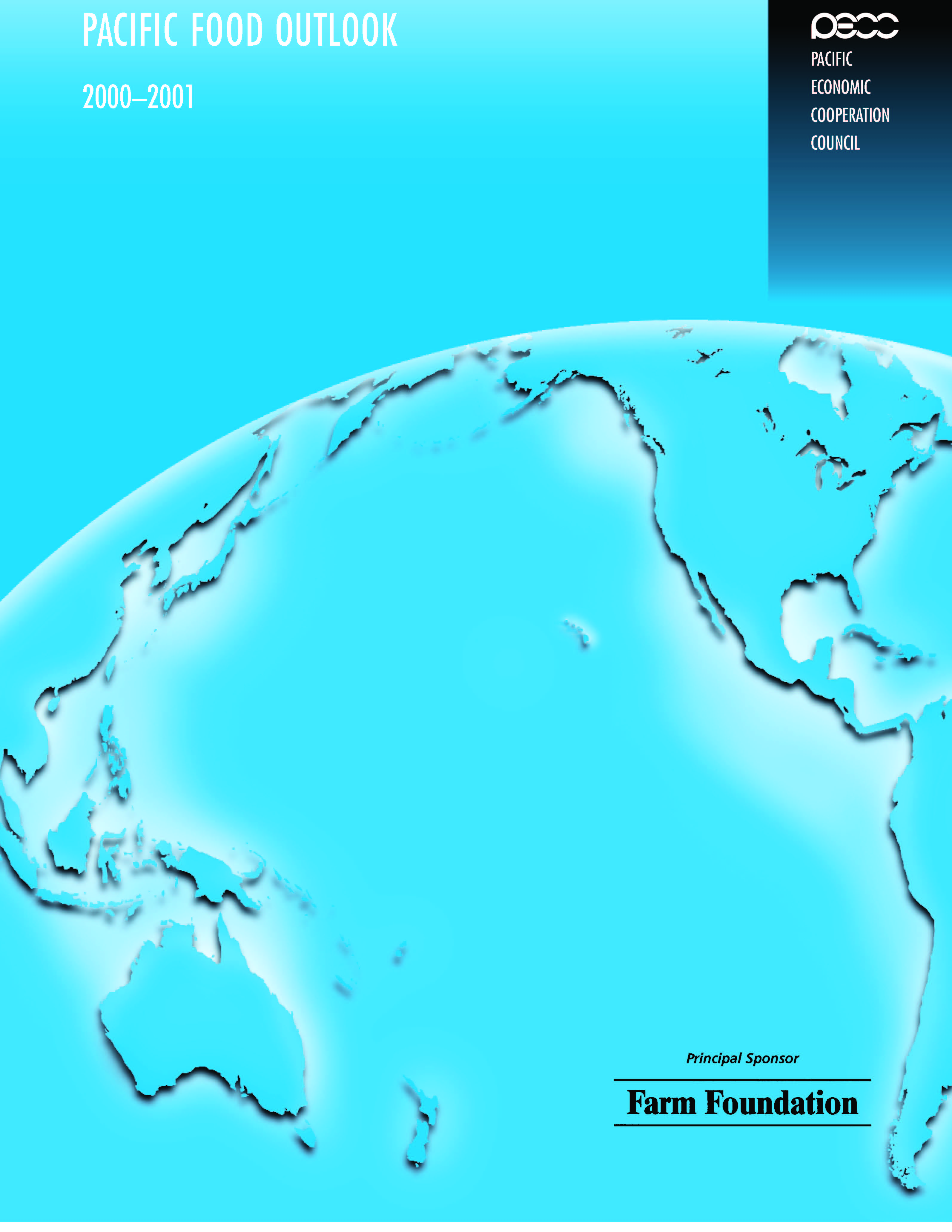 'The Role of Technology' (2000-2001)
'The Role of Technology' (2000-2001)
The 2000-2001 PECC Pacific Food Outlook (PFO) provides a comprehensive assessment of the region's food system, an economy-by-economy assessment of the use of new food system technologies, including the use of biotech crops and information technology. It concludes that the key to success in meeting this challenge will be the skill and vision with which the Pacific economies are able to implement new technologies in the interests of producers and consumers alike.
Aside from periodic macroeconomic shocks such as the Asian financial crisis (1997--99) and higher oil prices (2000), the fundamental challenge facing the PECC region in the longer term will be raising food system productivity to keep pace with population growth and rising affluence. With limits to expanded land resources, technology will play an important future role not only in raising yields at the farm level but also in reducing losses, enhancing quality and freshness, and increasing the speed of product delivery to consumers. These developments also promise to widen consumer choice and raise human nutrition levels, although technology advances alone will not end hunger.
Technologies related to marketing and processing food products, in combination with information technologies, are likely to be the most important to the outlook of the region’s food system. These technologies will be particularly important in supporting the rapid process of urbanization in Asia.
The food security of these vast urban areas, particularly in the less developed parts of the region, will depend on adequate investment in food distribution systems, food processing
capacity, and storage and marketing facilities and innovations that make these systems more efficient.
default Pacific Food System Outlook 2000-2001-The Role of New Technology (1.79 MB)
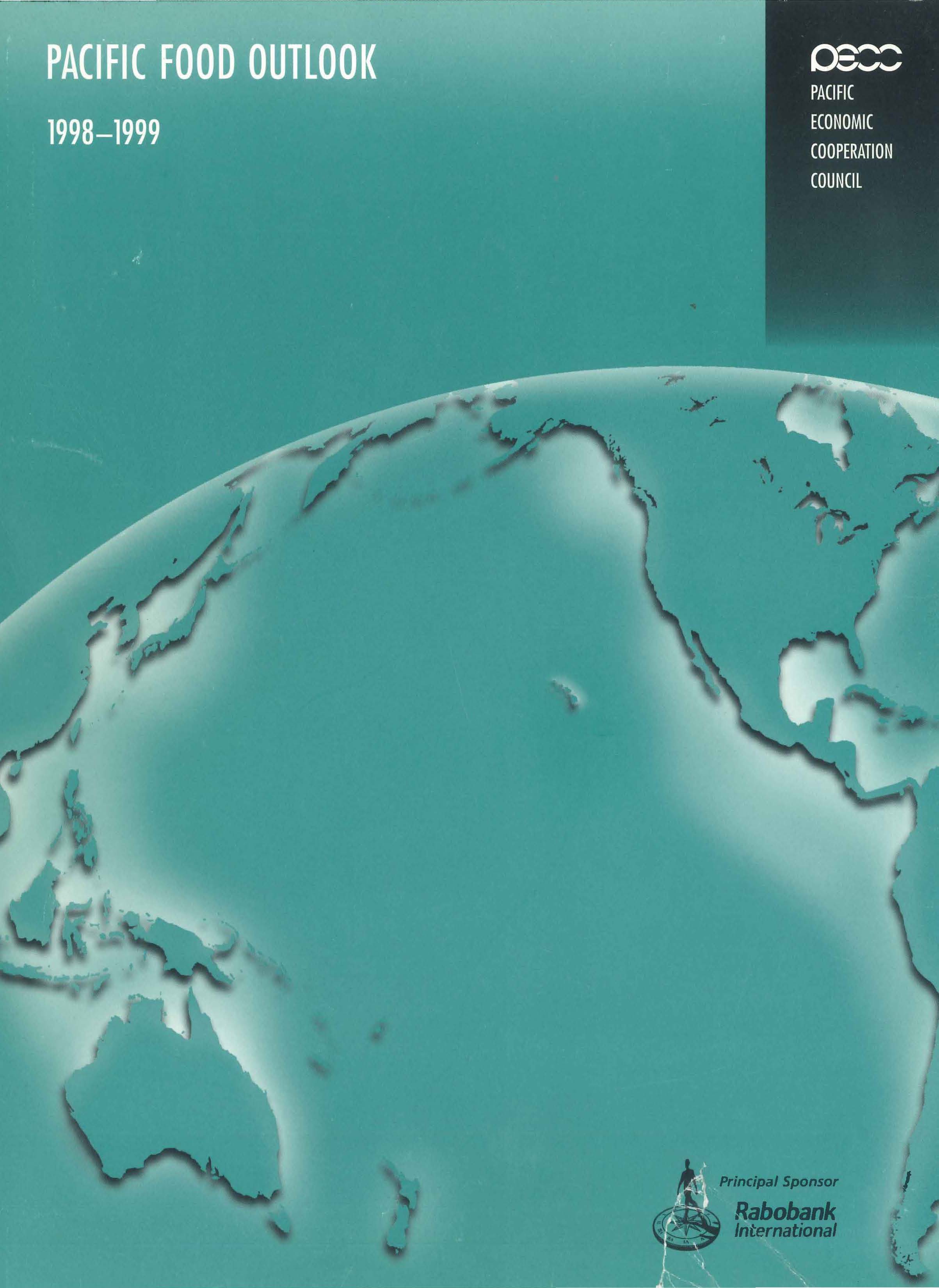
'Impact of Regional Crisis' (1998-1999)
The 1998-1999 PFO report draws attention to the decline in family incomes even as food costs have risen, resulting in an overall drop in food consumption in the most affected economies in Asia. Some urban poor have returned to rural areas where they find it easier to survive.
It notes that one of the more troubling impacts of the financial crisis on the PECC region’s food system has been scaling back of private and public investment in infrastructure. While some economies use spending on infrastructure projects as a way to jump start economic expansion – China and Japan are recent examples – infrastructure programs are often the first to be cut when fortunes fall in developing economies as illustrated by Indonesia, Malaysia and South Korea.
The PECC notes that general price growth in the Asia-Pacific economies will moderate slightly in 1999 and 2000 compared with 1998. Food prices are expected to grow more slowly compared with 1998, primarily because of economic recovery in Southeast Asia. With the exception of a few economies (such as Colombia and Mexico), food price inflation in 1999-2000 in other parts of the Asia Pacific is forecast to be very modest. In China and Singapore, food prices are expected to decline slightly in 1999.
Regional trade in agricultural commodities should bottom out in 1999 as recovery begins to raise purchasing power for food in 2000.
default Pacific Food System Outlook 1998-1999-Impact of Regional Crisis (1.05 MB)
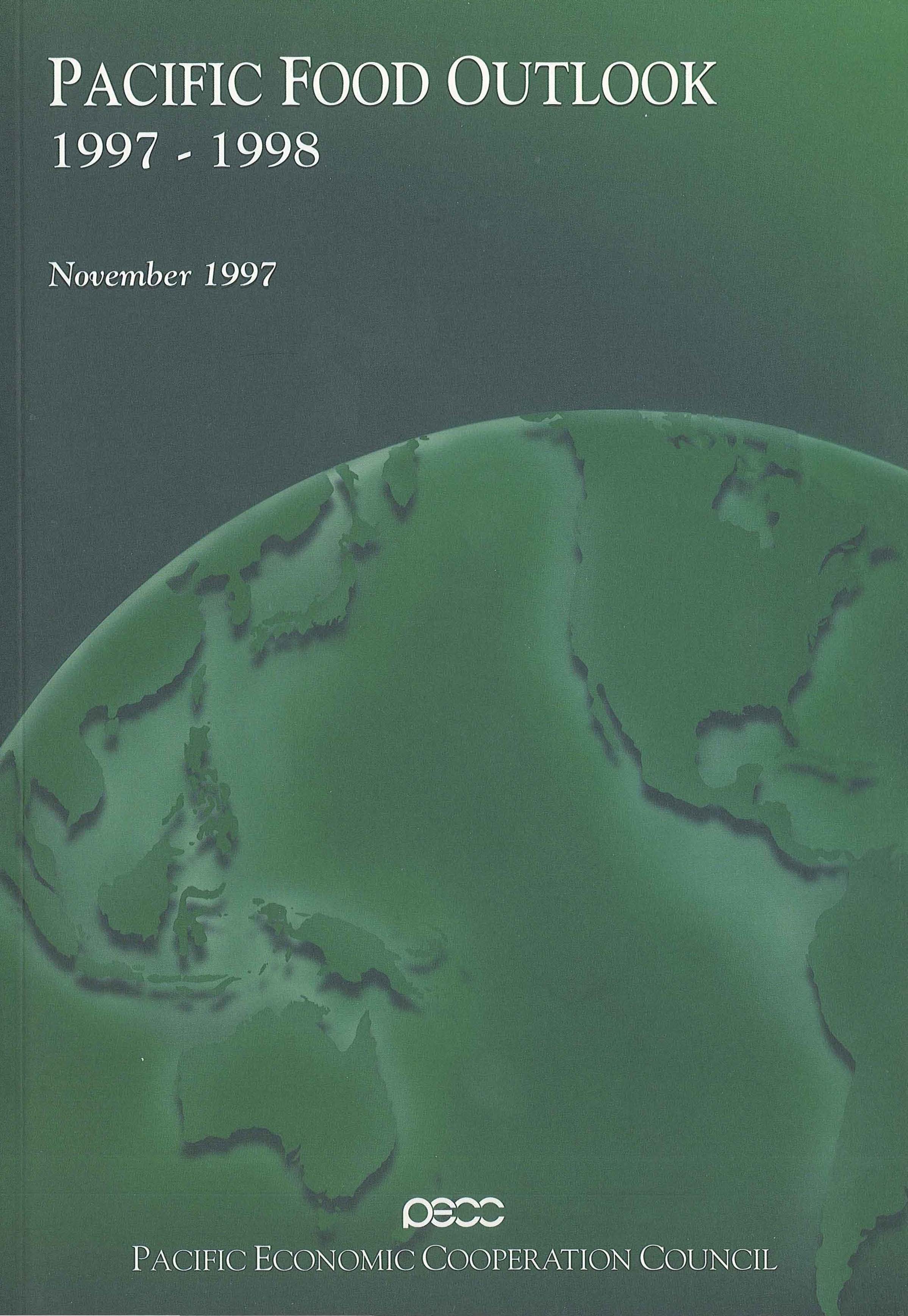
Pacific Food Outlook 1997-1998
PECC released an inaugural report on 27 November 1997 at the APEC Ministerial meeting in Vancouver that examines several key areas related to food in the region and makes a critical recommendation for change to member economies. The report represents the first region-wide coordinated effort to provide a short-term outlook for the Pacific food and agriculture system.
The PECC report is to provide Asia Pacific Economic Council (APEC) policy makers with a comprehensive and ongoing annual assessment of the Pacific food system. In the Pacific Food Outlook, most data and information are drawn from 20 PECC economy market reports. Insights from the PFO cover the region's food prices and consumption, food processing and marketing including basic infrastructure components, agricultural production and trade, plus food and agricultural policy.
The 1997 – 1998 report indicates the main demand drivers and indicators of market potential, affecting the food outlook for the PECC economies in 1997-98 are:
Rapid economic growth
Increased intra-regional agricultural trade
Infrastructure development
Slowing total population growth
Increased urbanisation
default Pacific Food System Outlook 1997-1998 (2.90 MB)
APEC-PECC RISE PROJECT
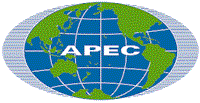 |
 |
RISE (Regional Integration for Sustainable Economies) is a multi-sectoral public:private initiative aimed at stimulating growth in industrial and agricultural areas beyond the urban centers, enabling rural populations to participate more fully in the global economy. (This section will be updated)
Update of the RISE Project by Mr. HE Xiansong, Vice Mayor of Jiangmen, Guangdong Provice, China
APEC Member Economy Requests for RISE
Regional Growth Center Demonstration Project Teams
Terms of Reference
APEC-PECC Regional Integration
For Sustainable Economies (RISE)
Project Description
RISE RGC Site Visit to Jiangmen City, China
Site Report
